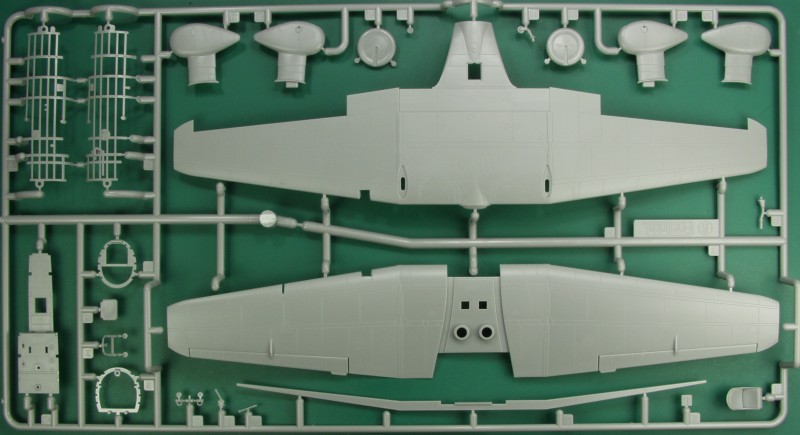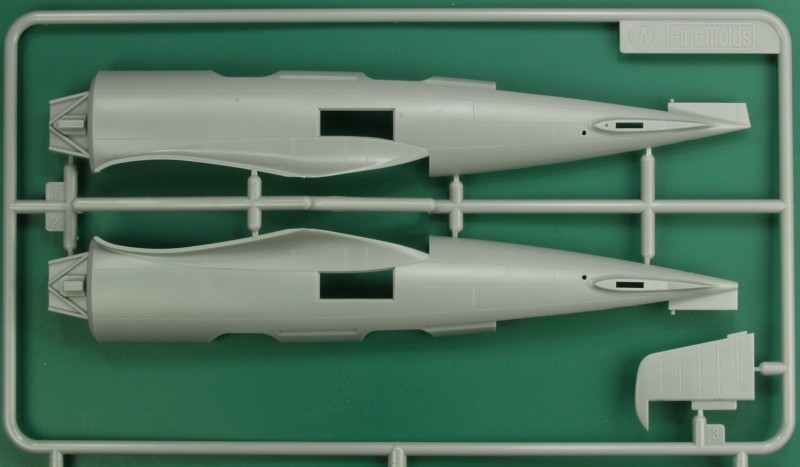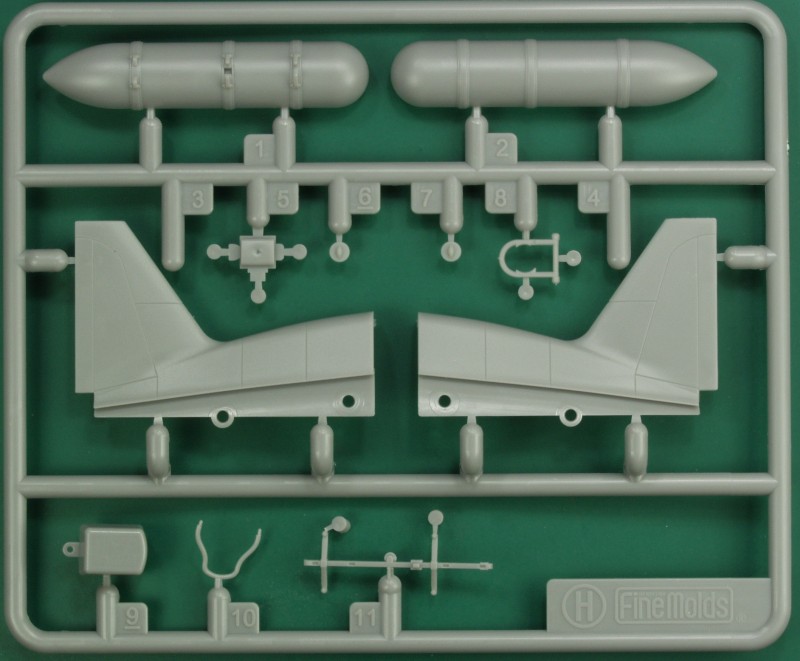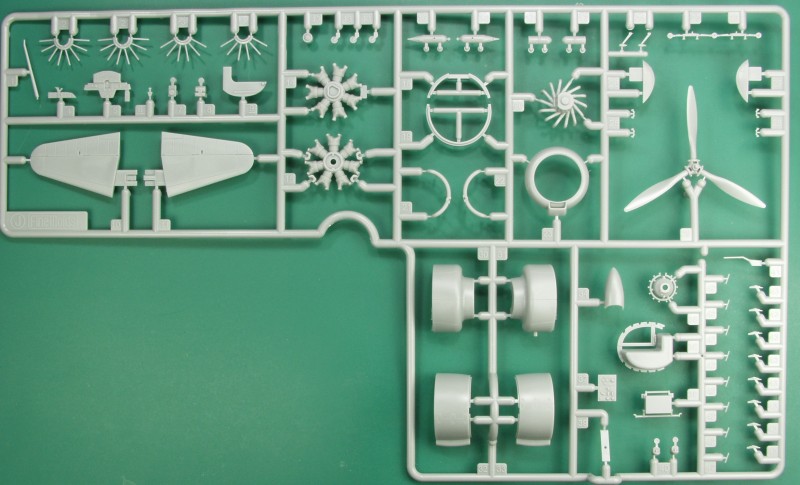
Mitsubishi
C5M2 'Babs'
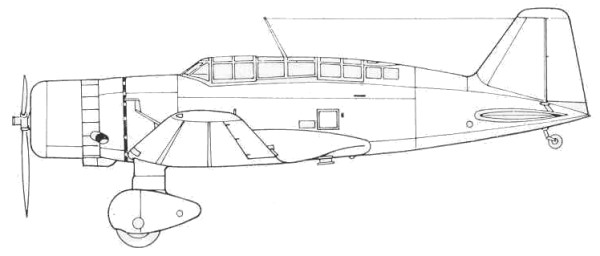
The Ki-15 was designed by the Mitsubishi Corporation to meet an Imperial Japanese Army Air Force
requirement of 1935 for a two-seat, high-speed reconnaissance aircraft.
The resulting aircraft was a low-wing cantilever monoplane with a fixed,
spatted undercarriage, similar to other all-metal stressed-skin
monoplanes developed elsewhere in 1930s, such as the Heinkel He 70 and
the Northrop Alpha. Power was by a single Nakajima
Ha-8 radial engine, giving 750 hp at 13,120 ft. The
first prototype flew in May 1936, with testing proving successful, the
aircraft meeting all performance requirements, reaching a speed of
299 mph and showing good handling characteristics.
Service testing was completed without difficulty and the type was
ordered into production under the official designation Army Type 97
Command Reconnaissance Plane Model 1. In May 1937, a year after the
first flight, delivery of the first of 437 production aircraft to the
army began.
The Ki-15-I was almost immediately placed into operational service at
the beginning of the war with China in 1937. The aircraft proved useful
in the early period of the Second Sino-Japanese War and performed
missions deep into Chinese strategic rear areas, as far as reaching
Lanzhou. Its high speed gave it a distinct advantage until the Chinese
Air Force acquired Soviet Polikarpov I-16 fighters. This aircraft was
used for level bombing, close support and photo reconnaissance before
being eventually replaced by the Mitsubishi Ki-30.
Plans were already in hand to improve the Ki-15-I, and in September
1939 the Ki-15-II was put into production with the 900 hp Mitsubishi
Ha-26-1; the smaller diameter of this both reduced drag and
overcame one of the major shortcomings of the initial version: poor
forward field of view past the large-diameter of the initial Nakajima
Kotobuki engine. The improved version entered production in September
1939 as the Ki-15-II.
The Japanese Navy, impressed by the performance of this aircraft,
ordered 20 examples of the Ki-15-II under the designation “Navy Type 98
Reconnaissance Plane Model 1," or Mitsubishi designation C5M1, even
before the Army. The Navy subsequently acquired 30 C5M2 aircraft which
had an even more powerful 949 hp Nakajima Sakae 12 engine. They
were used for reconnaissance duties.
When production ended, approximately 500 examples of all versions of
the Ki-15 had been built, the majority in front-line service when the
Pacific War began. By 1943, the Ki-15 had been relegated to second-line
roles, but numbers were expended in kamikaze attacks in the
closing stages of World War II.
The
Kit
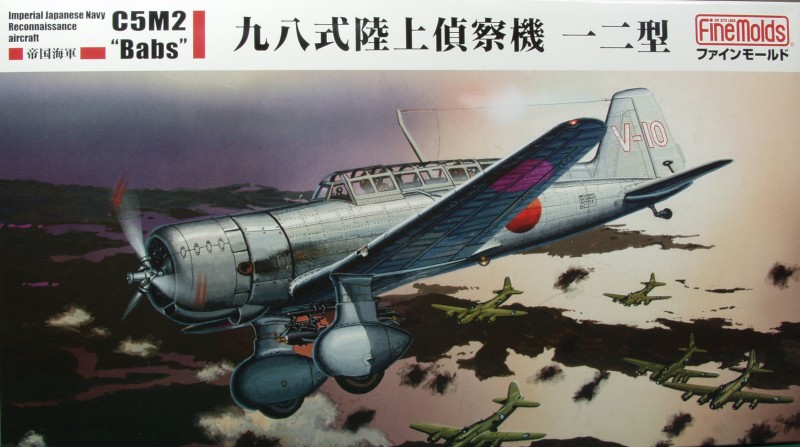
The
FineMolds kit comes in a medium sized
tray type top open box of thin card stock with nice artwork on the front.
Inside the box one finds three sealed bags, one with two sprues, basically
wings and fuselage, another with two sprues, one large and one small and
the third with the clear parts, decal sheet and a very small sprue with
the machine guns and ammo cans. The parts are molded in a gray color and
are crisply molded and I couldn't find any flash worth mentioning. Ejector
pin marks are where they should not be seen when things are assembled. The
surface is matte and surface detail consists of fine recessed panel lines
and a few really small recessed rivets and fasteners. They are so small
they may well disappear when painted. There are raised surface details
where applicable. I did not find any surface defects other than some flow
marks that shouldn't show once painted.
The control
surfaces are molded in the neutral position except for the rudder which is
a separate piece but looks as if it is meant to be mounted in the neutral
position as well. The ailerons are molded to the top wing surface so as to
provide a nice thin trailing edge and there are gaps at the end to make
them appear as a separate pieces. The entire tail assembly with the fillet
that extends from the rear of the canopy is a molded separately, my guess
was to make it easier to get an accurate molding of the complex shape. The
cockpit is very well detailed with a large portion of the kits 120 parts
going into it. The instrument panel has raised bezels with internal detail
and a decal overlay is provided. The pilot seat and controls are mounted
to a floor assembly along with fore, aft and middle bulkheads and the
observers seat and camera. Structural wall assemblies are then loaded with
additional details and these are then attached to the floor and bulkheads.
Only thing missing is seat restraints and those can be sourced from
FineMolds. Altogether a really nice package for the interior. No option is
provided to pose the canopy in the open position, you are on your own for
that.
The wings have
a one piece top and bottom and a spar is supplied to go in between. The
engine is a quite complete assembly made up of 14 parts with separate push
rod assemblies, intake and exhaust manifolds. Needs only some wiring to
finish it off but most of the detail will be hidden in the cowl. The
propeller is a one piece molding with separate weights for the pitch
adjustment. The wheels are designed with slots so they can be installed in
the wheel spats after assembly and painting. They are one piece moldings
and are not weighted. A belly fuel tank is provided as well as a center
line bomb rack and two rather unusual looking bombs to put on it. Holes in
the bottom wing will need to be opened if you wish to use them.
OK, lets look
at the sprues.
The first one
shown has the finely molded cockpit structure, floor and cockpit
bulkheads, wings, wheels and spats.
The fuselage
halves and rudder.
Belly tank,
vertical tail and some other odds and ends.
Primarily
engine parts on this one but also the horizontal stabilizers, internal
parts and other bits and bobs.
The Lewis guns
and ammo cans.
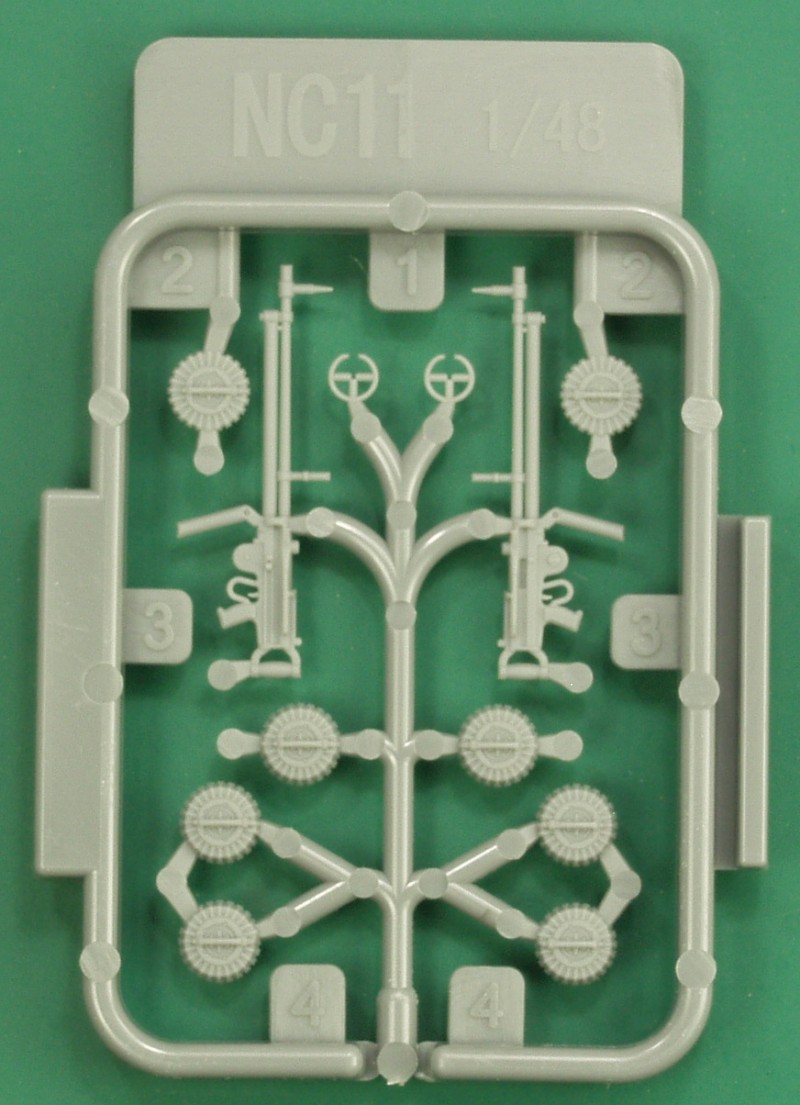
The
clear
parts are only moderately thin and not all that optically clear.
This may improve with a dip in your favorite clear medium. The
frame lines are clearly defined but not really raised and the
frames themselves appear to be lightly frosted. Hopefully Eduard
will bless us with a mask set.
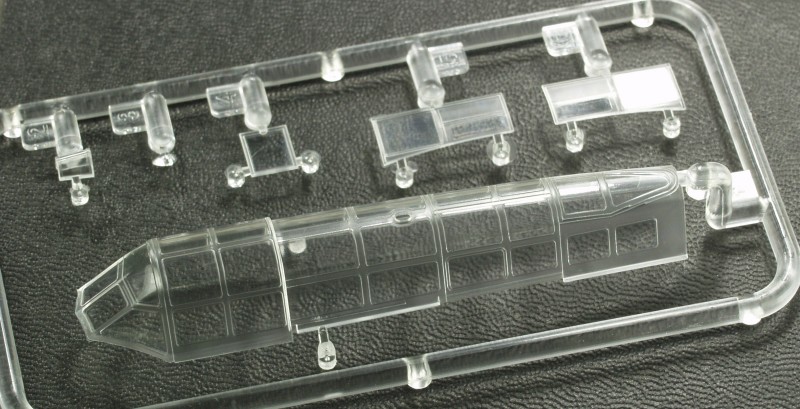
The
decals are thin, in register and have a matte finish. Excess
film has been kept to a minimum except around the large letters.
In spite of its small size it provides markings for three
aircraft which vary only in the tail number. Three different
groups from 1942 are represented and all three in overall IJN
Mitsubishi gray. I have no experience with decals from FineMolds
so can't comment on their quality.
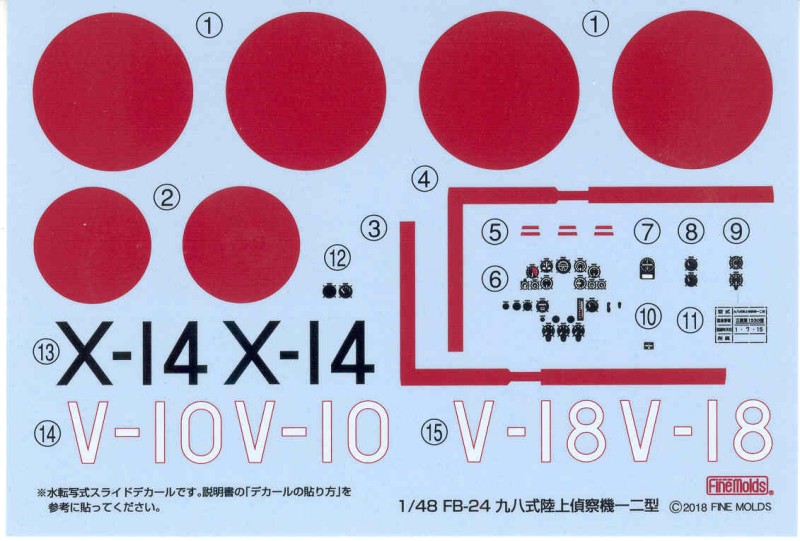
The
instructions are map style, folded in quarters
making eight panels. Most of the verbiage is in
Japanese but there are enough English notations
that it shouldn't be an issue as the diagrams are
all quite clear. The front page I assume is
history of the type ( I don't read Japanese). The
instructions include a parts map, icon chart and
the usual safety warnings. The assembly is divided
into 18 steps and color call outs are provided
along the way with color names and Mr. Color
numbers. There are two panels with painting and
marking instructions for the three aircraft on the
decal sheet. There is also a color reference chart
located there but I can't read any of it except
the generic color names.
After
Market
Goodies
This kit is pretty new at the time of this
review and no aftermarket is available except for seat restraints
which are available from FineMolds.
Conclusions
This
kit looks to be a very nicely detailed kit that fills the void for
early war Japanese aircraft. Some of the early FineMold kits where
not all that great for fit but their newer kits get better
reviews. Still a good idea to treat it as a limited run kit and
test fit before applying glue. Other than that I have no problem
recommending it to most level of modelers.
Links
to kit build or reviews
Another
in box review can be found here
and a build/review here.
References
Japanese
Aircraft of the Pacific War by R.J. Francillon
Wikipedia
Back to the Misc Japanese page
Updated 8/17/18



